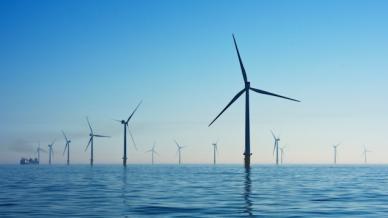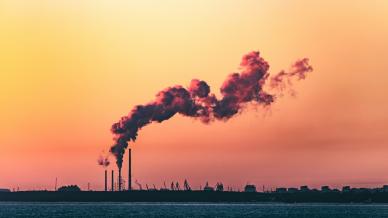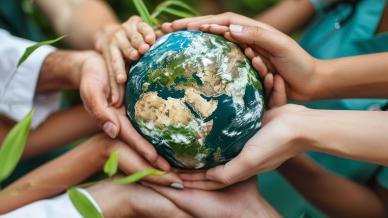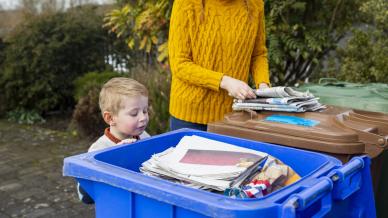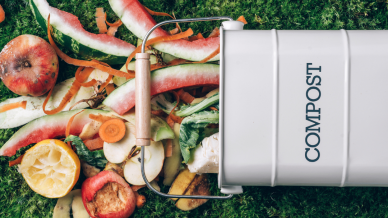The definition of net zero from the United Nations (UN) Climate Action website, states that net zero “means cutting greenhouse gas (GHG) emissions to as close to zero as possible". The remaining emissions should be re-absorbed from the atmosphere by the biosphere.
The World Resources Institute (WRI) states that net zero “will be achieved when all emissions released by human activities are counterbalanced by removing carbon from the atmosphere in a process known as carbon removal.”
Net zero is when countries and communities are at a position whereby their GHG emissions are balanced with an equal amount of GHG removal.
Why do we hear about net zero all the time?
Because the future of our way of life and that of the next generations depends upon it. The Intergovernmental Panel on Climate Change (IPCC), reports that “climate-related risks to health, livelihoods, food security, water supply, human security, and economic growth are projected to increase with global warming of 1.5°C” [compared to pre-industrial levels]. To remain below the agreed temperature levels, global emissions must reduce by about 45% of the 2010 levels by 2030 and reach net zero by 2050.
The UN’s Climate Action website reports that, burning fossil fuels to generate power, make stuff and to travel accounts for over 75% of global GHG emissions and up to 90% percent of all carbon dioxide (CO2) emissions.
According to the science and data on climate change, In order to get to a state of net zero requires a two-part approach, (WRI):
- We will need to reduce human-caused emissions, such as those from industry, and fossil-fuelled vehicles, as close to zero as possible.
- We will need to remove any remaining emissions by balancing those with an equivalent amount of carbon removal from the atmosphere.
What is the UK doing on net zero?
The UK Government has made several pledges to help achieve its 2050 target for Net Zero. They pledged to
- achieving fully "clean" electricity by 2035, by rapidly increasing wind, solar and nuclear power.
- making 80% of new car sales "zero emission" by 2030
- capturing and storing between 20 and 30 million tonnes of CO2 a year by 2030
- installing 600,000 electric heat pumps a year by 2028.
Overall, the UK has made significant GHG gas emission cuts. They have fallen by 50% since 1990. This figure though only included emission within the UK boundaries and not from goods manufactured and transported from overseas. – Therefore, it is not the full Carbon Footprint of the UK. It can be seen as a powerful performance so far. However, there are warnings that the UK may not be able to meet its future net zero commitments.
In June 2023, the government's independent advisers, the UK Climate Change Committee (CCC), said that they were concerned of the "worryingly slow" progress by the UK Government. It said from its view, its confidence that the UK would meet emissions targets in the 2030s had "markedly declined" from the previous years. Following this in September 2023, the UK Prime Minister announced changes to the policy commitments by
- delaying the ban on new petrol and diesel cars from 2030 to 2035,
- an exemption meaning 20% of households would "never have to switch" to an electric heat pump.
The UK CCC follow up to this policy change was that net zero will be even "harder to achieve".
Under the Paris climate agreement 2015, the UK needs to reduce its emissions by 68% by 2030, compared with 1990 levels - a key step towards achieving net zero by 2050.
Will the UK meet its climate targets?
The UK CCC follow up to the September 23 policy change was that net zero will be even "harder to achieve".
And in May 2024, the 2nd time in 2 years, the High Court ruled that the government would have to redraft its net zero strategy. This was because its existing plan did not provide enough detail on how future targets could be met by the government.
What is the problem with net zero targets?
There is some debate about how some countries might try to reach net zero. For instance, by importing energy intensive goods from overseas rather than manufacturing them within its own borders, a country might record lower emissions. However, the real point is that it would not have reduced any of the total amount of GHG going to atmosphere.
You may have heard of carbon offsetting. Offsetting of emissions is also controversial. This allows wealthier countries to offset their emissions as they pay poorer countries to switch to cleaner fuels. Some studies suggest that the offset markets may promise more emissions reductions than they achieve. This phenomenon, known as “over-crediting,” undermines the effectiveness of offsetting programs.
There is also the issue of distraction from real solutions. While tree planting and other offset projects are positive, they do not directly reduce emissions entering the atmosphere. Relying solely on offsets can distract from the urgent need to cut emissions at the source. This can also result in risk and long-term impact. As an example, newly planted trees take years to capture significant CO2, and there is always a risk of setbacks due to droughts, wildfires, and deforestation.
Offsets alone will not solve the climate crisis. Overall, this could let wealthier nations avoid decreasing their fossil fuel usage, by taking the benefit of a switch.
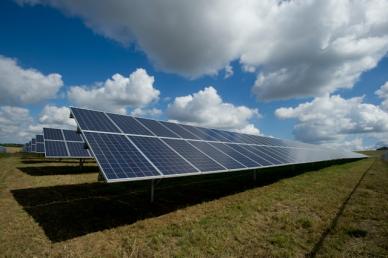
How can we reduce human-caused emissions?
The UN identified activities that create emissions are non-sustainable food production, and deforestation or wildfires. As trees absorb carbon from the atmosphere during their lifespan, deforestation and wildfires release it when they are destroyed. Non-sustainable food production releases copious amounts of CO2, methane, and other GHGs into the atmosphere. Countries need to stop deforestation and reforest areas by planting trees. Food production needs to become more sustainable and not affect the surrounding ecosystems.
-
How to reduce emissions from transportation
GHG emissions from vehicles play a significant role in contributing to climate change also. Exhaust emissions produce GHG directly from your vehicle when driving. Petrol and Diesel cars emit CO₂, nitrogen oxides (NOₓ), and other pollutants from their exhaust pipes. Beyond exhaust emissions there are GHGs associated with the production and distribution of petrol and power in the form of electricity. For instance, producing petrol involves extracting oil, refining it, and transporting it to service stations.
Road Transport accounts for three-quarters of global transport emissions. Most of this comes from passenger vehicles (cars and buses), contributing 45.1%. Trucks carrying freight contribute an added 29.4%. Aviation accounts for 11.6% of transport emissions, emitting almost one billion tonnes of CO₂ annually. International shipping contributes a similar amount (10.6%). Rail travel and freight emit truly little (only 1%).
Shifting to electric vehicles offers a practical way to reduce emissions from passenger vehicles. As the world shifts toward lower-carbon electricity sources, electrification can help offset the rise in transport emissions.
Increasing public transportation, biking, and walking will help immensely. Public transportation reduces emissions. Buses, trains, and trams emits fewer GHG per passenger compared to individual cars. By using public transport, we collectively reduce traffic congestion and air pollution. There are some savings as public transport can be more cost-effective than driving, especially when considering fuel, parking fees, and maintenance costs. Public transportation also nurtures social interaction and connects people within a community.
Cycling is environmentally friendly and has zero emissions when conducted. It also reduces traffic congestion. Regular cycling improves physical fitness and mental well-being and is ideal for short distances, reducing the need for car travel.
Walking is even better than cycling. You can easily say it is the most environmentally friendly mode of transport. It also promotes physical activity, reduces stress, and enhances overall health. Allowing us to explore and appreciate all around us.
-
How to reduce emissions from buildings
Retrofitting buildings and improving energy efficiency are considered essential steps toward sustainability. Insulation should be enhanced in walls, roofs, and windows to reduce heat loss or gain. Proper insulation keeps indoor temperatures stable and reduces energy consumption. Traditional lightbulbs should be replaced with energy-efficient LED lights, as LEDs last longer and consume less electricity. Using smart thermostats to optimise heating and cooling based on occupancy and outdoor conditions will also reduce emissions and costs. Sealing gaps around doors, windows, and ducts helps to prevent drafts and keep indoor comfort. Replacing old appliances (refrigerators, HVAC systems, water heaters) with newer, efficient models is key.
-
Cleaner energy
Transitioning to clean, renewable energy from sources like wind and solar are a crucial step in reducing greenhouse gas emissions. Wind turbines harness the power of wind to generate electricity. They produce no direct emissions, making them an environmentally friendly choice. Wind farms are increasingly common, especially in regions with consistent wind patterns. Solar panels convert sunlight into electricity. Solar power is abundant, sustainable, and emits no greenhouse gases during operation. Rooftop solar installations and large-scale solar farms contribute to a cleaner energy mix. By using renewable energy sources there is a guarantee that for every unit of electricity you take out of the grid, they will ensure that the same of clean energy is put back in. This helps clean up our energy supply. Using natural daylight during the day for as long as possible reduces the reliance on artificial lighting. Ensure you turn off lights, electronics, and appliances when not in use. This also reduces GHG emissions and costs at the household level.
-
How to reduce emissions from food waste
Food waste contributes to emissions, strains resources and needs to be reduce when working towards net zero. You can shop smart and plan meals, check expiry dates, and buy in bulk. You can store your food effectively by using FIFO, “First In, First Out.” It is a method used for managing food items. When storing food, it means using items in the order they were received or bought. For example, when stocking a fridge, you would place newer items behind older ones so that the older items are used first. This helps prevent food waste and ensures that nothing expires unnecessarily. Ensure you refrigerate correctly and freeze excess food. You can also cook mindfully and be aware of portion control and become creative with leftovers which can cover more meals.
So, what is Net Zero Week?
Net Zero Week is a week of national awareness of the requirements to reduce our emissions and how we do it. Net Zero Week 2024 (6/12 July). The idea is to bring together all the stakeholders needed to reach net zero by 2050 and to ensure Britain’s energy is both secure and affordable. You can get involved in the live and exclusive, online conference and hear from a wide range of experts sharing insight and commentary from academics, scientists, policy influencers, trade associations and solution providers.
In support of Net Zero
To get you started on the road to Net Zero, WEA in its Green Curriculum aims to educate, inspire, and empower individuals and communities to act towards a more sustainable future and to deal with the effects of climate change. They look at sustainability in general, net zero and its’ problems, how to deal with green issues, permaculture, and the more organic subjects about the environment. Courses can be found under the Humanities and Science category in Nature, Ecology & Permaculture on the WEA site
